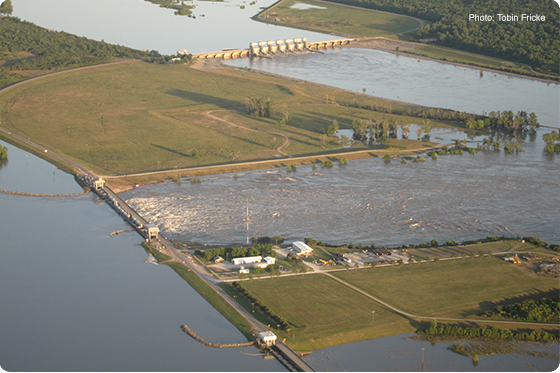
On February 12, representatives of the state of Mississippi filed a lawsuit against the federal government in the U.S. Court of Claims alleging that federal regulation of Mississippi River water flowing through the Old River Control Structure near Baton Rouge, Louisiana had caused repeated flooding that resulted in a loss of value of land owned by school boards in three counties. Specifically, the lawsuit was filed by Secretary of State Delbert Hosemann (due to his position as the co-trustee of state land held for all Mississippi school districts), Attorney General Jim Hood, and the affected Claiborne, Natchez-Adams, and Wilkinson school districts. The state generally contends that the land’s loss of value was the fault of the federal government, thus constituting an unconstitutional “taking” in violation of the Fifth Amendment, which states that private property cannot be taken for public use without just compensation. Mississippi is asking for a minimum of $25 million that would go directly to the affected school districts.
The Old River Control Structure is a floodgate system that was first built by the Army Corps of Engineers in 1963. It regulates the flow of water leaving the Mississippi into the Atchafalaya River, thus preventing the Mississippi from changing course. Congress requires that no more than 30 percent of the Mississippi River’s flow pass through the structure into the Atchafalaya, thus guaranteeing that freshwater levels in the Mississippi south of Baton Rouge remain high enough for the river to be used as a source of drinking water for New Orleans and Jefferson Parishes. The structure was updated following a severe flood in the 1970s that nearly allowed the river to break through in several places, and now exists as a complex containing the original structures as well as the updated auxiliary structure. In the 1980s, Louisiana constructed a hydroelectric station that utilizes water passing through the structure to generate electricity for the state. The station also provides an additional measure of control at the site.
Mississippi’s lawsuit first alleges that Congress and the Army Corps did not account for the potential effects of the Old River complex on the state’s public school lands, and never purchased “flowage rights” from the school boards, as was constitutionally required under the Fifth Amendment. In the state’s opinion, the purchase of these rights would have allowed the federal government to compensate the school districts for the flooding of the land caused by the structure. Additionally, the state alleges that the Old River structure is currently diverting only 23 to 25 percent of the Mississippi’s flow into the Atchafalaya, causing a larger amount of sediment than necessary to stay in the Mississippi. The state argues that this insufficient diversion narrows the Mississippi’s channel by approximately 2,600 feet and raises the riverbed, increasing flooding as a result.
In justifying its requested $25 million in relief, the state argues that the approximately 8,000 affected acres is being turned into a “permanent reservoir” by the federal government, with the Army Corps’ efforts to straighten and shorten the river resulting in more severe flooding and more flood days when compared to previous years. Secretary Hosemann noted that only 75 days of flooding were recorded in the area from 1950 – 1972, while more than 1,000 were recorded from 1973 to 2016. However, the Secretary also noted that the state had not yet conducted studies of the river’s water flow meant to scientifically prove that sediment build up from the Old River complex was to blame for increased flooding. Such studies will reportedly be conducted over the next two years, costing a total of $50,000.
While some, such as Secretary Hosemann, have commented that the lawsuit is necessary in order to compensate school children for an unconstitutional taking, others argue that the federal government is not fully to blame for the flooding. For example, some experts have noted that increased upstream development has sent more water downstream over the years, and that heavy upstream rains possibly caused by climate change could have contributed to the unusual wintertime flooding the state has experienced in recent years. Regardless of the true cause or causes of the flooding, downstream residents will certainly keep a close eye on the case’s outcome, for, if successful, it could open the door for similar lawsuits filed by private landowners.












